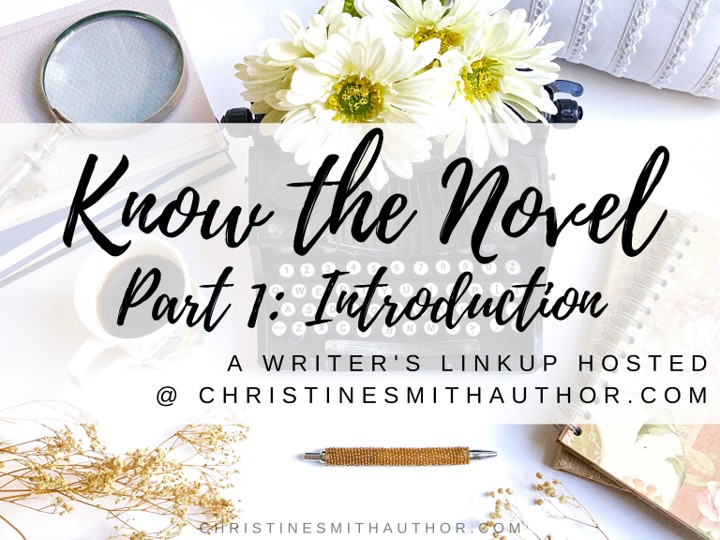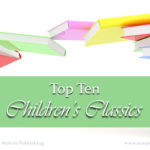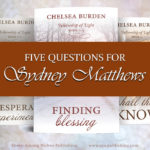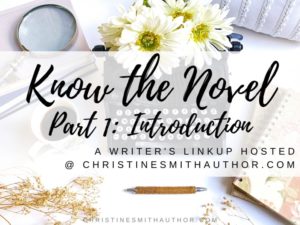Know the Novel: Part One
 This fall I am excited to be participating for the first time in Christine Smith’s Know the Novel linkup! This three-part linkup (spanning October, November, and December) features a monthly set of questions designed to give blog readers a sneak peek at the books authors are working on right now.
This fall I am excited to be participating for the first time in Christine Smith’s Know the Novel linkup! This three-part linkup (spanning October, November, and December) features a monthly set of questions designed to give blog readers a sneak peek at the books authors are working on right now.
Each month, I’ll be answering ten questions, complied by Christine, about my newest project: In Quest of a Nameless Sea. And so, without further ado…
(drumroll!)
- What first sparked the idea for this novel?
Watching a documentary about the mapping of the Canadian west, and the search for a north-west passage in the 1800s. Although In Search of a Nameless Sea is set two hundred years early, in a different location, the basic themes are the same.
- Share a blurb (or just an overall summary)!
Thirteen-year-old Philip Talbot will do anything to win back his father’s approval—but he could never have guessed that the quest for redemption and acceptance would take him to the furthest boundaries of the known world. Does the tiny, unlabeled sliver of water, at the western edge of the newly-published map of Virginia, represent anything more than a hazy legend? Will a single quartet of daring adventurers succeed in crossing the uncharted wilderness to find out? And if they do, will the nameless sea be able to solve the problems surging in Philip’s own soul?
- Where does the story take place? What are some of your favorite aspects of the setting?
In Search of a Nameless Sea is set in the colony of Virginia, in the 1630s.
Quite honestly, this setting is a step outside my comfort zone: I haven’t done a lot of reading/research in this era before, so I feel like I don’t have a very rich background of details to draw from. My favorite aspect of the project is that I had the opportunity to visit historic Jamestown on a family trip over a decade ago, and I have loved going back over photos and delving into this time period/location again while researching for this book.
- Tell us about your protagonist(s).
Philip is a young sailor who finds himself in disgrace with his sea-captain father, after he becomes accidentally responsible for the loss of a valuable navigational instrument. Struggling with discouragement and self-doubt, Philip is astonished when a party of explorers ask him to join their far-fetched expedition in search of the fabled ocean that will connect Europe with the Far East. Philip needs a way to win back his father’s esteem. The explorers need someone who knows how to make maps. It seems like a Providential fit—until Philip begins to discover that this adventure is about a whole lot more than an unnamed ocean on the far edge of the map.
- Who (or what) is the antagonist?
Originally, the antagonist the whole party are facing is the difficult and uncharted terrain they need to cross in search of their nameless sea. As the story builds, however, and the conflicting motivations of the different characters come into play, at least one of the adventurers becomes Philip’s antagonist in a tangible form, while his own self-doubt and struggle for acceptance form the third—and possibly biggest—antagonist inside.
- What excites you the most about this novel?
I am going to be trying out the “Hero’s Journey” structure for the first time, which I’m definitely looking forward to. I’m also really excited to be finally working on a series that has been tumbling around in my brain, in different forms, for a long time.
(Which leads seamlessly into the next question:)
- Is this going to be a series? standalone? something else?
Yes! In Quest of a Nameless Sea is part of a new historical series I am working on. The series still needs a title, but it features clusters of three books (one picture book, one early-chapter book, and one adventure-type novella) set in different eras throughout American history. The books in each cluster are about the same characters, from the same fictional family, but each book is geared towards a different age range.
It’s a model that I think will fit especially well into multi-grade homeschooling history curricula.
The stories portray close-knit, Christ-honouring families throughout history, highlighting the strengths rather than the weaknesses of the Christian testimony in each era.
- Are you plotting? pantsing? plansting?
I am very much a plotting author, although the level of detail for my plotting varies from project to project. In Quest of a Nameless Sea, as an adventure story, has more action and fewer character strands, so I’ve left more details up to the inspiration of the moment than I might otherwise have done.
- Name a few unique elements in this story.
I think the most unique element is the historical cluster model, that ties Philip’s story in with a shorter early-chapter book about his younger sister Jeanie, and a (still-awaiting-first-draft) picture book about his even younger sister Elspeth. Instead of being a stand alone, or a series intended for a single audience, each piece of the Talbots’ story is geared at a different readership within a single reading family.
- Share some fun “extras” of the story.
(A song or full playlist, some aesthetics, a collage, a Pinterest board, a map you’ve made, a special theme you’re going to incorporate, ANYTHING you want to share!).
I decided to share the original map, that started my fictitious adventurers on their quest for a nameless sea. It was published in 1830 by Henricus Hondius, drawing heavily on John Smith’s earlier map of 1612. The Library of Congress copy is in greyscale, but it was also available at the time in full colour.
Click here to view the map on the Library of Congress website.
Interestingly, the map is oriented with west, instead of north, at the top of the page. In the upper righthand corner you can see the unlabelled crescent of water that period explorers hoped represented the ocean on the far side of the American continent. No European had actually seen the lands represented in the further reaches of the map. It had been drawn based on descriptions—possibly including legends—from First Nations sources. Despite the highly convincing squiggly lines of the rivers reaching into the uncharted land, neither Hondius nor Smith had concrete data on which to base the finer details of the intriguing land they had drawn.
Know the Novel: Part One
And that’s all ten questions!
If you love writing (or reading) don’t forget to check out the rest of the Know the Novel linkup here:
I’d love to hear your own questions in the comments section below. And don’t forget to come back in November for the next part of the series, where I’ll be exploring my writing process, struggles, victories, and more!
You might also enjoy:

Whether you’re a parent looking for worthwhile book recs, a teacher trying to fill classroom story time, or a reader who just loves great literature, our top ten children’s classics list is the perfect place to start.

Do you ever get to the end of a book and wish you could ask the characters some questions? Today I have that unique opportunity as SAW Publishing presents a character interview with Sidney Matthews.

As you become more responsible for your personal reading choices, you start to think about books in ways you never thought about them before. So, what about fiction? Is it good? Is it bad? Is it something you should read?


That is such a neat idea to write related stories on different levels!! That is so creative, and such a good thing for homeschoolers.
Thanks, Bethany! It’s an idea that’s kind of been rattling around in my brain for a while, so I’m excited to finally be working on it!
This sounds like such a fascinating story! Loving all these historical and swashbuckling vibes. I can imagine there will be so much intrigue and adventure along the way. And I think that is such an amazing idea clustering it all so there are tie-in books for every age group. What a delightful thing for families, especially homeschooling families. I was homeschooled all my schooling days, so I really appreciate this idea. ^_^
Thank you so much for participating in Know the Novel! I loved reading about this. I do hope all the writing goes wonderfully!
Aw! Thanks for the encouragement, Christine!